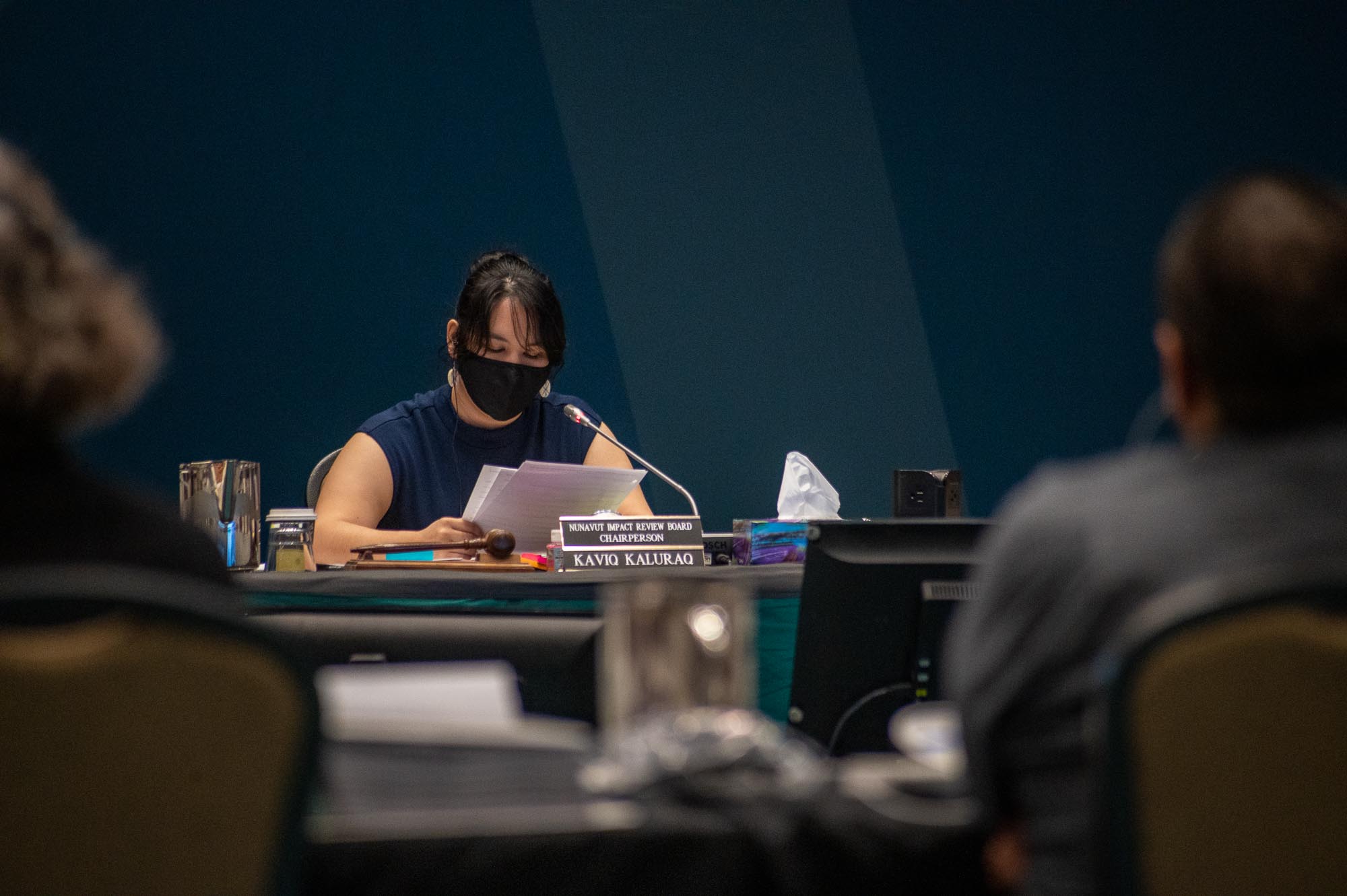Nunavut review board recommends against Baffinland expansion
The recommendation against the Mary River mine expansion ends a nearly four-year review process. A final decision now lies with Canada's federal government.

The Nunavut Impact Review Board has recommended federal Northern Affairs Minister Daniel Vandal reject Baffinland Iron Mines Corp.’s proposed Mary River mine expansion, saying it has the potential to cause damage to marine mammals, caribou and other wildlife.
The project could also possibly affect wildlife and fish habitats outside of the territory — negative impacts that cannot be “adequately prevented, mitigated, or adaptively managed” under Baffinland’s current plans, said board chairperson Marjorie Kaviq Kaluraq.
“[The expansion] has the potential to result in significant adverse ecosystemic effects on marine mammals and fish, caribou and other terrestrial wildlife,” she said in the board’s announcement.
“And these effects could lead to associated significant adverse effects on Inuit harvesting, culture, land use and food security in Nunavut.”
The board released its decision Friday evening, ending a four-year review process that saw a public hearing dragged out between 2019 and 2021 due to COVID-19 and scheduling problems.
Vandal’s office now has 90 days to review the board’s recommendation and approve or deny the project.
In a statement released shortly after the board’s announcement, Baffinland said it was surprised and disappointed by the decision.
“Our … proposal is based on years of in-depth study and detailed scientific analysis, and has considerable local support based on years of consultation with Inuit and local communities,” said chief executive officer Brian Penney.
“We will be asking the federal government to consider all of the evidence and input and to approve the … application with fair and reasonable conditions.”
The Oakville-based mining company currently trucks 6 million tonnes of iron ore per year from the Mary River mine to Milne Inlet, and ships it out through the Tallurutiup Imanga conservation area.
It wanted to double that annual ore output to 12 million tonnes, construct an additional dock at the port, and build a 110-km railway from the mine to Milne Inlet.
Since the first hearing was suspended in 2019, Baffinland has made changes to its initial proposal to try to gain support from hamlets, and from hunters and trappers organizations in affected communities.
Some of these changes included a gradual increase to the 168 ore carrier transits per shipping season, a commitment not to ship until landfast ice breaks, and to pay for daycares or community garages.
Prior to Friday’s announcement, Baffinland said if it gained approval it expected the mine would pay out at least $2.4 billion to Nunavut Tunngavik Inc. and the Qikiqtani Inuit Association in royalties over the life of the mine, and generate $680 million in revenue for the Government of Nunavut.
If rejected, Baffinland said, it might have to temporarily shut down the mine.
On social media, Vandal thanked the board and participants for their work and said he will review the report with his team.
“A decision will be taken following appropriate due diligence and comprehensive analysis, including whether the duty to consult has been met or not,” he wrote.